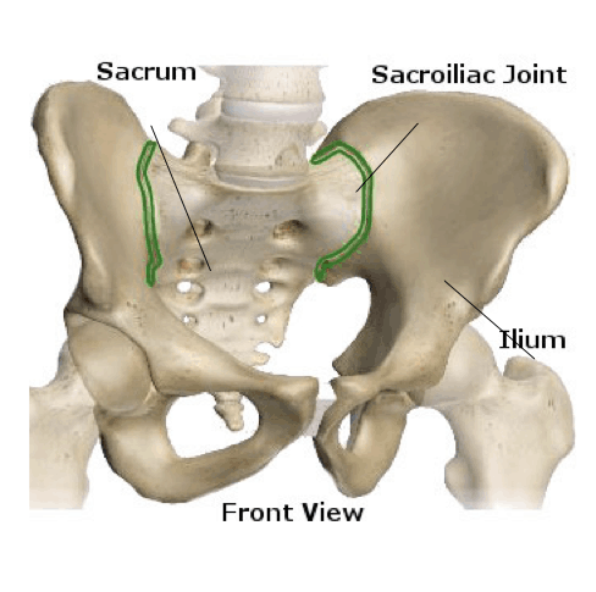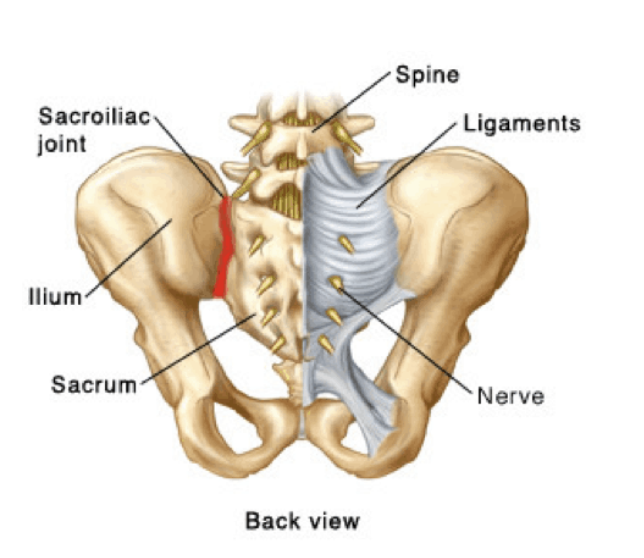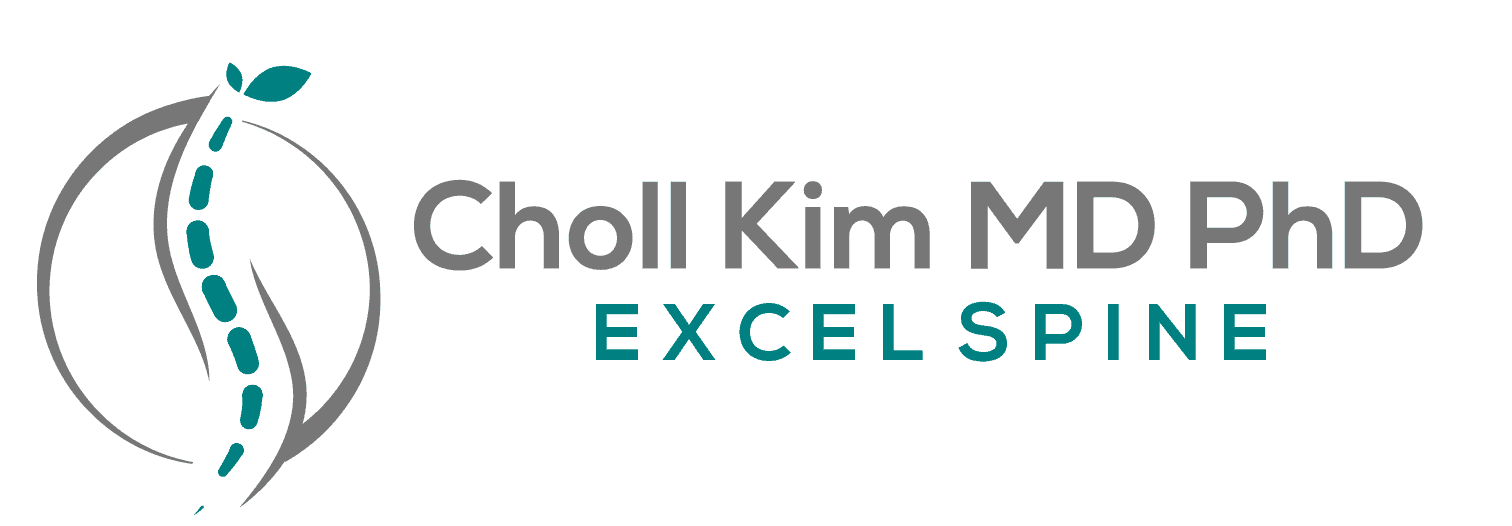Overview
The spine is made up of a column of 33 individual bones, called vertebrae, which are stacked atop one another from the base of the skull to the pelvis, and provide the entire body with structure and support. The majority of these vertebrae are separated by gel like discs throughout the spine, but the sacrum (base of the spine and between the hips) is made up of 5 vertebrae which are fused. The sacrum protects the genito-uro nerves and connects the lumbar spine to the Iliac (hip) bones forming the sacroiliac joint. This joint allows movement of the legs relative to the body and shifts weight from the spine to the hips/pelvis. It is supported by many ligaments which provide strength and stability to the pelvic area.
SI Joint Dysfunction
The SI Joint can cause low back and hip pain due to hypermobility of the joint or degenerative pain. Hypermobility causes the nerves around the joint to become irritated causing pain in the lower back during certain movements. Treatments include physical therapy and a daily home exercise program, injections, and surgery to fuse the joint.


Causes
SI Joint Dysfunction can be caused by injury, pregnancy, arthritis, or previous lumbar fusion. Trauma to the pelvis can strain the ligaments and cause hypermobility. During pregnancy, these same ligaments are relaxed to prepare for childbirth.
Symptoms
Symptoms include difficulty turning over in bed, struggling to put on shoes and socks, pain getting into and out of the car, stiffness upon standing after sitting or rising from bed, and aching to one side of the lower back after prolonged sitting.

